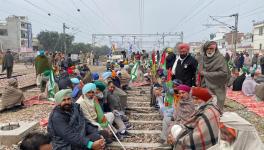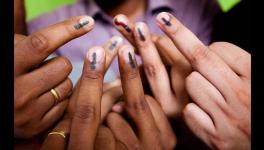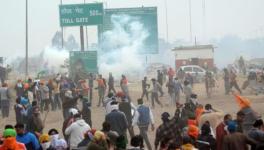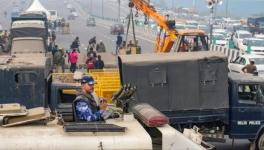Punjab Polls: Substance Abuse Continues to Affect Youth in the State, Multiple Treatment Options Needed
Representational use only.
Udta Punjab, a Bollywood film released in 2016, highlighted the issue of the severe drug problem in Punjab. The movie acted as an eye-opener for many in the state. After five years, as the state is ready for another Assembly poll, the film has gained traction again in the leading newspapers.
Recently, Shiromani Akali Dal (SAD) leader, Bikram Singh Majithia, was charged with sections 25, 27(A) and 29 of the Narcotic Drugs and Psychotropic Substances (NDPS) Act. Later, the Supreme Court granted him protection on the arrest until the elections were over.
Sukhbir Singh Badal, SAD's chief ministerial candidate in the polls, held in an interview to an English daily, that there is no problem of Chitta (an impure form of heroin) in Punjab, Delhi, Haryana or Goa.
"Udta Punjab is all created by media. Have you found any drug addicts lying down on the road here? Punjab has got no chittas. Does anyone talk about chittas in Bollywood? Does anybody talk about Udta Bollywood?" he asked.
Badal's denial cannot hide the problem of drugs in the state as it has made its way into the state's social fabric. As per the 2011 Census, 1.2% of the state's adult population is addicted to drugs. The Magnitude of Substance Use in India report, published by the Ministry of Social Justice and Empowerment in 2019, found that Punjab has some of the highest substance abuse rates among all major states and is way above the country averages. [See table below]. The number of the people of Punjab using injectable drugs is 88,165, and for India, it is 8,54,296.
Addressing the scourge has been on the agenda of political parties, and several programs have been put into action. Unfortunately, though, the systems have failed to stop the menace from spreading, and political parties were seemed to be only doing lip service, bringing up the issue at elections and then pushing it back for the next five years.
NewsClick spoke to Anuroop Kaur Sandhu, a woman candidate from Sri Muktsar Sahib, a Border district in the Malwa belt, who is addressing the issue during her campaign. As per Sandhu, the border district is an easy trade route for drugs. She said that people in power need to the sensitive to the issue and maintain a check on the entry of drugs into the state. The people know where the drugs are coming from and how they affect their families but cannot do much to stop it.
In Anandpur Sahib district, bordering Himachal Pradesh, while talking about the problem of drugs, a farmer, Harjaap Singh, said that there is no problem of drugs in the district. Singh further said that if at all it exists, it's only limited to drivers who travel from one place to another and indulge in phukki (poppy husk) and afeem (opium). In his view, these are mild drugs and not a cause of worry. However, he believes that it would be better if the issue could be discussed openly in the state.
During our travels, it was reiterated by multiple people that the access to drugs in the state got impacted due to the pandemic-induced lockdowns. This happened because of limited supply and increased costs. Still, the overall problem did not abate.
In Chandigarh, NewsClick spoke to Manav, who works with a large community of migrant workers and local labourers in the Hallo Majra colony. He has been providing free tuition to children of the area. As per Manav, the problem escalated during the lockdowns as many people lost their jobs. Several kids in the colony had to stay with local guardians as their families returned to their respective villages. With the closure of physical classes in schools, these children became a vulnerable and easy target for alcohol and drugs.
To understand this scenario and learn more about the issue of drugs in the state, NewsClick spoke to Dr Sundeep Bhola from Kapurthala District in the Majha region. Dr Bhola is recognised as someone who is single-handedly trying to change the thinking of the people and the state's approach to the issue of drugs. Here are the excerpts of the interview:
In your view, how serious is the drugs problem in the state? What makes it different from other parts of the country? What are the special challenges?
The drug problem in Punjab is serious as it's been there for a long and has gone deep into the roots. The same has been projected in various surveys conducted in the state, the most recent being the Magnitude of Substance use in India-2019. Not only the surveys, the ground reality equally confirms it. The more serious concern is the indulgence of lower age groups in the range of 14-15 years of age. The non-serious attitude of civil society makes it more serious.
The things that make it different are mainly the directionless youth, who are not willing to get educated, get skilled, learn some technical courses, work, or be entrepreneurs. There is a race to go abroad, till that time they not ready to work in so-called smaller enterprises and at some lower salaries. We are all responsible for this as we couldn't guide the youth and show them a proper direction. That has been one of many factors why the youths have indulged in drugs. As per one article in a magazine, the expiry date for Punjab is 2030, which seems too scary. I could interpret from this article that Punjab will be left without any productive lives, i.e. either the youth will fall prey to the drugs or leave the state.
The special challenges are:
1. Society and the community are not participating in any programs.
2. The issues of marginalised communities like women, children, transgender people, etc., have neither been addressed nor have any services for them ever been started or even thought of.
3. The programs, once started, are not being updated or modified from time to time, as per the need.
4. The staff has not been trained or updated regarding these programs.
What are the regional variations in terms of the socio-economic profile of drug users, nature of drugs used, numbers, and the average age of children experimenting with drugs?
Currently, not much variation in the socio-economic profile of drug users has been observed. All the three regions, i.e. Majha, Malwa, Doaba, are equally affected. The various studies conducted on drugs use have also confirmed that. The menace has spared no caste, creed, strata, etc. The age groups which earlier used to be that of 25-35 years, now have come down to 18-25 or even lesser.
We have seen a couple of children hooked to the drugs at the age of 12-13 years of age. Since their parents have no place to go and no special services have been made available, the precious time of 4-5 years has already elapsed. There are other issues as well- the huge stigma and the apprehension of being labelled a drug addict for the whole of their lives, for the child, and that for the parents keeps them hiding.
You have been doing path-breaking work with drug users and other stakeholders. How serious is the problem amongst the women? Are they consuming the same drugs as the men?
The problem in women is as same as that of men; in fact, more serious. They consume the same drugs, but they get addicted within a shorter period; lesser quantity affects them more, and the chances of relapse and overdose are higher. They are dependent on their male partners for addiction as well as de-addiction. They are more stigmatised.
We also learned about the drug De-addiction Centre for Women, which started in 2019 with one woman and now the number is 235. Tell us more about the initiative? How difficult is it to get women to the centre and stay there? What about family and community support for de-addiction and acceptance once they are out of drugs?
The indoor De-addiction Centre for Women was started in 2017, and it couldn't attract many women drug users or even the policymakers. A pilot project by the Punjab government and Alliance India was started in 2019. The outreach peers provided by them brought all these 240+ women to be enrolled into the De-addiction services and be provided with health-related services, social security schemes, etc. Some of these women preferred to get themselves admitted willingly. The state government has started employment and vocational training for them, which is a great initiative to bring them to the mainstream and improve their acceptance in the family and community.
This pilot project has been successful, and it ran for two years and has shown the world how to move ahead with the services for this marginalised group. Unfortunately, this project couldn't go beyond its pilot phase, though we are still trying to get it rolled out in the whole of the state.
How did you manage your centres during the lockdowns? How did the pandemic impact the incidence/services?
The lockdowns had been a very challenging period. The patients were neither able to reach the services, nor they were able to get the drugs to get relief from their withdrawals. The indoor services had to be stopped during the pandemic, but the OPD services continued like that.
One pilot project to provide the de-addiction medicines at the doorsteps was initiated named mobile OOAT (mOOAT) clinic. The community widely accepted it. The idea was that if the groceries, milk, and vegetables can be provided at the doorsteps, then why can't the same be done for the de-addiction medicines? Of course, after following the proper guidelines and strict monitoring.
Many believe that the drug situation is getting worse so much so that parents are so scared that their children will get into drugs that they are forcing them to leave the country? How do you view this? What are the unfinished/ new challenges? In your view, what are people thinking? Which is the party that is most committed to addressing the menace?
Yes, parents are scared. But sending them abroad can never be the right idea. As per my knowledge, these drugs and many others are available in other parts of the world. Things getting worse means that the form of drug or the type of drugs has been changed or replaced by stronger and more intoxicated preparations.
The unfinished challenges for me have been:
1. I have not convinced the policymakers on providing multiple treatment options and tailor-made individualised management.
2. Setting up special management strategies for the marginalised communities.
3. To provide refresher training to the staff involved in the de-addiction programs and update them on the changing scenarios.
I have worked very closely with all the governments. I have seen that they all work in the field with serious concerns and passion. As it is to be a dynamic process, it has to be modified and manoeuvred from time to time. Please don't halt any of the services. Every treatment modality is right; it might have to be modified but has to go on.
Whosoever comes to power; my request is to constitute a technical team and explore and work on all the possible options to address and curb this menace.
Get the latest reports & analysis with people's perspective on Protests, movements & deep analytical videos, discussions of the current affairs in your Telegram app. Subscribe to NewsClick's Telegram channel & get Real-Time updates on stories, as they get published on our website.
























